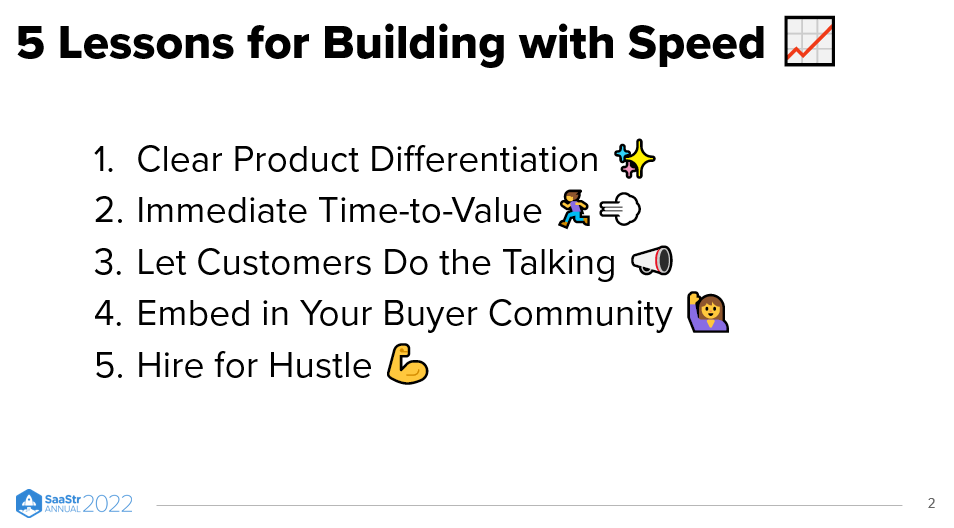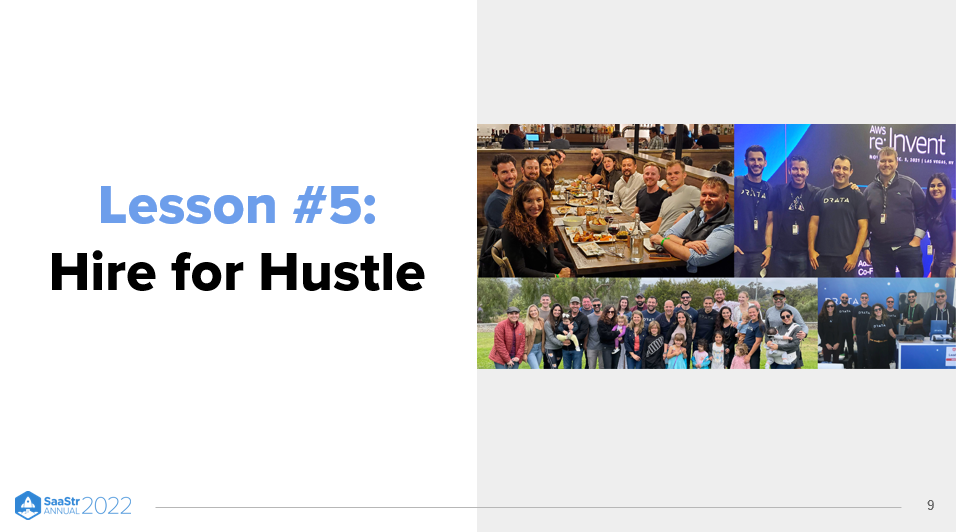Building a fast-growing business while tackling fierce competitive challenges is a formidable journey. Every successful SaaS business strategy requires a full-potential ambition aimed at sustained profitable growth. But once you begin to scale your business, you realize that you also need principles in place to strengthen your appetite for growth and expand profitably.
Every SaaS company strives to adapt to the emerging changes in the market as soon as possible and achieve sustainable growth. Adam Markowitz, Co-Founder and CEO at Drata, and Amanda Robson, Partner at Cowboy Ventures, walk us through key lessons they learned while growing Drata and the guiding principles that helped the company to sustain its growth.

Lesson 1: Create a clear product differentiation strategy
Product differentiation strategy entails capitalizing on your company’s uniqueness to attain a competitive advantage in a saturated market. Whether you’re disrupting a legacy space or jumping into a crowded market, there’s always room for product differentiation and innovation.
Product differentiation doesn’t always have to be with the product itself; it could relate to:
- The segment of the market you tackle.
- The strategies you deploy.
- The service you deliver.
- The marketing tone you use.
- The company culture you build.
With product differentiation, a simple yet overlooked trick is to listen—listen to the market and try to understand the pain points. Listening will take you to a new market opportunity and the ability to differentiate. After all, without a clear product differentiation strategy, you might struggle in an ocean of more experienced rivals and fail to find your own place in the market.
Lesson 2: Achieve immediate time-to-value
Time-to-value—the time taken to receive value should be minimum for your users, and there should be a continuous stream of that value. This immediate time-to-value applies to your product and the content you share on your website. As soon as users land on your website, they should get the value quickly.
You want your customers to make the payment decision as soon as possible. Your aim should be to ensure that a customer knows and understands the value they’ll get even before becoming a customer.
“If you’re not providing value immediately, users will look for competing products.” – Amanda Robson
The shorter the time frame to get value, the more likely you will attract a user and avoid customer churn.

Lesson 3: Let customers do the talking
Make your product useful and solve your customers’ pain points. Once you do that, customers will start spreading the word. In that stage, consider harnessing the power of case studies and tell the words in your customers’ words that your product brings real solutions. The success of your marketing strategy depends less on what you say and more on what your customers think and say about you.
From an investment perspective, having your customers be public advocates of what you’re building can attract investors. Your product reviews on the G2 platform or in video testimonials demonstrate how much users love your product. Ask your customers for testimonials—this costs you nothing.
Lesson 4: Embed in your community
The chances are your customers are talking about your product in the communities they’re part of. That’s a great thing, and you should find a way to become a pillar within those communities.
The number one reason to be present in these communities is to continue listening to customers and learn what makes them like or dislike your product. In short, immersing yourself in communities can be a good indicator of how engaged your audience is.
“Keep yourself close to customers and try to learn more about them. Then you can use such feedback to fine-tune your product and differentiate yourself.” – Adam Markowitz

Lesson 5: Build a successful company culture
You must have the proper structure and culture in place to enable faster growth. Define and identify the core values of your company from day one. Think about the real values that your company needs to become a successful company.
What’s even more challenging is attracting and retaining talent that embodies those values. Without a strong company culture, none of the above four principles will work. Once you’ve successfully built a culture where employees share the same goals and values as the company they’re working for, you will have a productive and passionate workforce who enjoys their work and adds to the company’s success.
Remember, culture is one thing that none of your competitors can replicate. As an entrepreneur or startup founder, your ability to build and maintain a great company culture will make investors excited. Today, company culture is one of the most understated competitive advantages you could have. Culture is a lasting differentiator.
Get on the path to becoming a unicorn
It’s one thing to build a fast-growing business; it’s another thing to run it successfully. No two businesses are the same, but the SaaS businesses that keep up with hyper-growth share a few common principles.
First, start with your product differentiation and make your solution more appealing to customers than other alternatives in your category. Then, deliver the optimal value with your product in the shortest time possible. Build a two-way relationship with your customers and make them spread the word. Find where your customers are online and listen to them. Finally, build the right culture and hire the right people to support your business growth.
The post From Stealth to Unicorn in 11 Months: Top 5 Lessons Learned with Drata CEO Adam Markowitz and Cowboy Ventures Partner Amanda Robson (Video) appeared first on SaaStr.
via https://www.aiupnow.com
Amelia Ibarra, Khareem Sudlow
